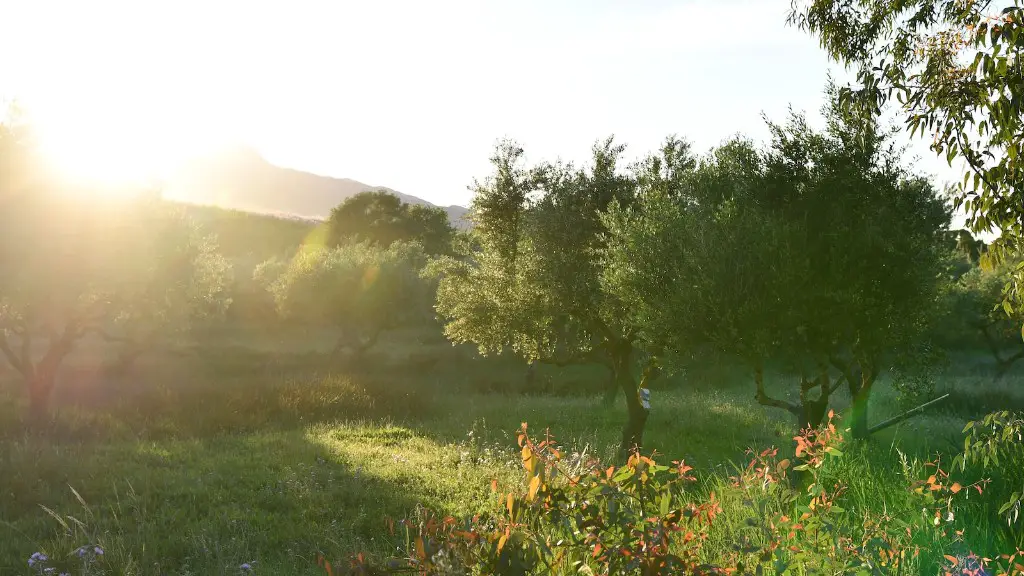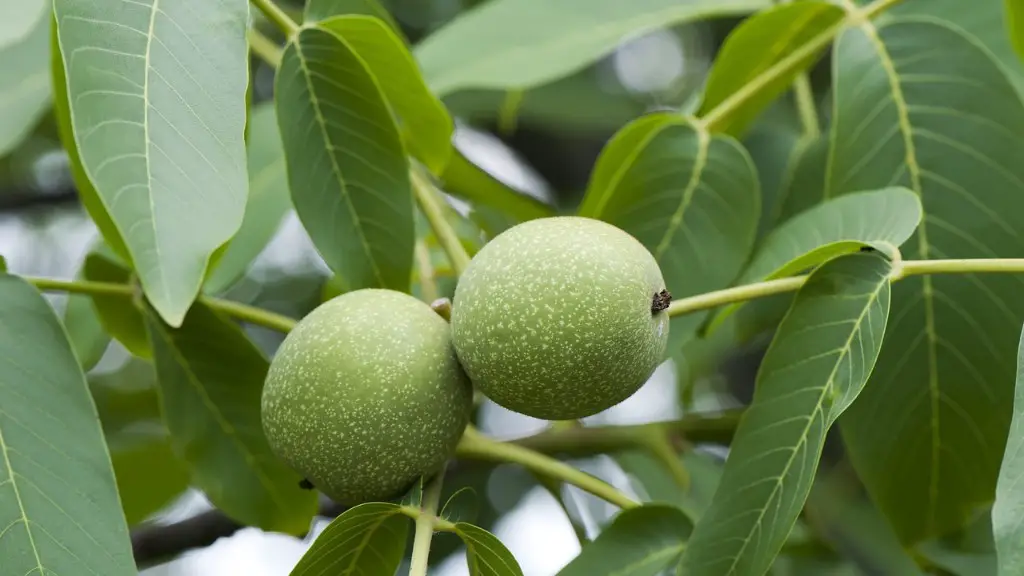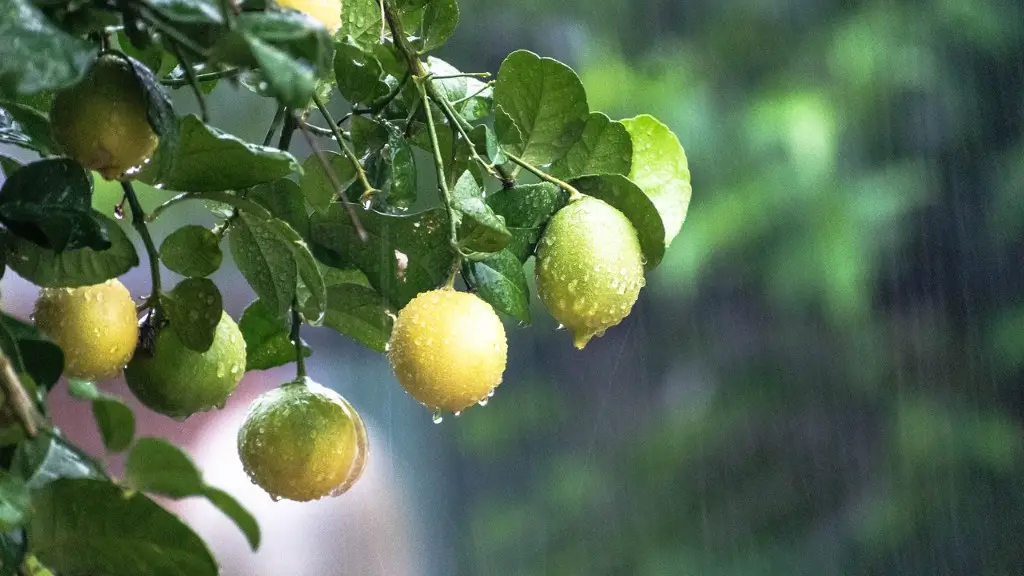For those of us who love lemons, being able to grow our own lemon tree can be a wonderfully satisfying experience. Here is a guide on how to plant and care for your own lemon tree so that you can enjoy its juicy fruit for many years to come!
To plant a lemon tree, choose a spot in full sun that has well-drained soil. dig a hole that is twice the width and depth of the tree’s root ball. Gently remove the tree from its container and loosen any roots that are wound tightly. Place the tree in the hole so that the root ball is even with the soil surface. fill in the hole with soil, tamping it down gently as you go. Water the tree deeply.
What is the best way to plant a lemon tree?
When you’re ready to plant your tree, dig a hole that’s just as deep and approximately twice as wide as the tree’s root ball. Once the hole is ready, place the tree in it and loosen its roots just a bit. Then, backfill the hole with soil and 2 inches of compost. Be sure to water the tree well after planting.
Lemon trees can be planted in either late winter or early spring. However, if the climate conditions are warm, potted trees can be planted year-round.
Where is the best place to plant lemon tree
Citrus trees need a lot of sun to grow fruit, so make sure to choose a spot that gets at least six hours of direct sunlight per day. If you live in a cooler climate, you can try growing the lemon tree against a wall or transporting the pots indoors during times of frost.
Lemon seeds can be a bit tricky to grow, but with a little patience you can be successful. Here are a few tips:
1. Gather the seeds.
2. Peel off their skin (optional).
3. Prepare the pots and soil.
4. Plant the lemon seeds about 1 inch deep.
5. Seal the pot with cling wrap and poke a few small holes.
6. Remove the cling wrap when sprouts come out of the soil and place it in a warm, sunny location.
With a little care, you can soon have your own lemon tree!
Do lemon trees grow better in pots or ground?
Lemon trees are a popular choice for growing in containers, but there are some challenges to consider. One issue is that they are more vulnerable to the cold and drought. While a lemon tree in the ground can take mild frost and cold, a lemon tree in a container cannot. A lemon tree in a container has a hardiness zone that is one zone higher than the USDA recommended zone. This means that it is important to provide some protection from the cold, such as placing the pot in a sheltered spot or covering it with a frost blanket. Drought can also be a problem, so be sure to water regularly and provide adequate drainage.
Lemon trees are a popular choice for many homeowners because of their attractive appearance and delicious fruit. When grown outdoors in warm climates, regular lemon trees can reach up to 20 feet in height and take up to six years to bear fruit. Although they require some patience and care, lemon trees are relatively easy to grow and maintain. With a little effort, you can enjoy fresh lemons from your very own tree in no time!
What kind of dirt is best for lemon tree?
Lemon trees are most commonly grown in sandy loam soils because they offer good drainage while still providing the tree with enough nutrients. Sandy loam soils are also easy to work with if you need to amend the soil with compost or other amendments.
In general, newly planted young citrus trees should be deeply watered about once or twice per week for most of the year. Water more often in sandy soils and when the weather is hot and windy. Reduce the frequency to weekly in clay soils during the winter.
How much space does a lemon tree need
When planting citrus trees, it is important to space them appropriately in order to allow them proper room to grow. Standard-size citrus trees should be spaced 12 to 25 feet apart, and dwarf citrus trees should be set 6 to 10 feet apart. This will ensure that the trees have enough room to develop properly and producing healthy fruit.
If you want to grow lemon trees in your kitchen garden, you need to make sure you live in an area with mild winters. Lemon trees are subtropical plants and will be killed or damaged if the temperature dips below 20 degrees. Even if you can’t grow lemon trees in your backyard, you can grow them in pots.
Do lemon trees grow fast?
Lemon trees are one of the fastest-growing fruit trees. They can easily sprout an inch per month during the growing season and typically reach 6-12 inches tall by the time they are one year old. Seedling trees grow vigorously but typically take about 7 years to bear fruit. If you want to grow a lemon tree, it’s best to start with a young tree from a nursery. That way, you can be sure that the tree is healthy and will bear fruit sooner.
To overwinter your tree, find a bright location in your home where the temperature remains between 5-10 degrees Celsius. You will need to ventilate the room frequently and provide shade if warm sunlight comes in through the windows. For south-facing windows, this is especially important from the end of January.
What are three common problems that lemon trees can have
There are seven problems of lemon trees: Lesions On Leaves – Citrus Canker Black Moldy Spots – Sooty Mold (And Aphids) Fuzzy Gray Mold And Brown Spots – Botrytis Blight Tan Spots with Dark Outlines – Anthracnose Brown Scabs – Lemon Scab. Each problem has its own solution. Citrus canker can be controlled by pruning infected areas and applying a copper-based fungicide. Sooty mold can be controlled by spraying the tree with water to remove the aphids that secrete honeydew, which the mold feeds on. Botrytis blight can be controlled by pruning infected areas and applying a fungicide. Anthracnose can be controlled by pruning infected areas and applying a fungicide. Lemon scab can be controlled by pruning infected areas and applying a fungicide.
If you experience cooler weather during the fall and winter months, growing a potted lemon tree indoors is a great way to sustain the plant all year long. Since these trees are self-pollinating, only one is needed to produce fruit.
How big is a 2 year old lemon tree?
This Meyer Lemon Tree is perfect for someone who wants to enjoy fresh, juicy lemons without having to worry about taking care of a large tree. This tree is also ideal for those who live in apartments or small homes, as it only grows to be 2-3 feet tall.
As always, it’s important to consult with your veterinarian if you think your dog has ingested something toxic. If your dog has eaten lemon tree leaves, stems, or fruit, watch for symptoms of gastrointestinal upset including vomiting and diarrhea. Central nervous system depression can cause symptoms like lethargy, weakness, and incoordination. If you see any of these signs, please call your vet right away.
Can I grow a lemon tree from a store bought lemon
Lemon trees grown from seed can take anywhere from 5 to 15 years to produce fruit, depending on the cultivar, freshness of the seed, and growing conditions. However, lemons from the grocery store can be used to inexpensively provide seeds to grow lemon trees.
Lemon trees benefit from the nitrogen and calcium in the coffee grounds. The organic material also improves the soil tilth. Only use the coffee grounds after they have been fully decomposed in the compost pile.
Conclusion
Firstly, you will need to purchase a lemon tree from a nursery or online. Be sure to pick a variety that will do well in your climate. Once you have your tree, find a sunny spot in your yard with well-drained soil.
Lemon trees do not like to sit in wet soil, as this can lead to root rot.
Dig a hole that is twice the width and depth of the tree’s root ball.
Loosen the roots of the tree before placing it in the hole.
You may need to remove some dirt from the hole so that the tree will be at the same level it was in the pot.
Fill in the hole with dirt, tamping it down as you go, and water the tree well.
When it comes to planting a lemon tree, there are a few key things to keep in mind. Make sure to choose a sunny spot for your tree, as lemons need lots of sunlight to thrive. Also, be sure to plant your tree in well-draining soil, as soggy soil can lead to root rot. And finally, water your tree regularly, as Lemon trees are drought-sensitive and need to be kept moist. By following these simple tips, you’ll be well on your way to growing a healthy, thriving lemon tree.




